If you are familiar with my work, you know that I am an advocate of eating a “nose-to-tail” omnivorous diet for optimal fertility, pregnancy outcomes, and postpartum recovery. That means not only consuming muscle meats, like steak and chicken breast, but consuming all parts of the animal. There are many reasons for this.
Why is it beneficial to consume liver and organ meats?
- Honors the animal’s life, which we have taken for our own nourishment
- Minimizes food waste
- Lessens the environmental impact (one study from Germany showed that consuming organ meats could offset 14% of emissions related to livestock)
- Perhaps most pertinent to my work, organ meat provides an array of micronutrients. Specific micronutrients are concentrated in organ meats relative to muscle meats.
If you want to extract maximum nutrition with the least harm, nose-to-tail eating is where it’s at.
But, eating organ meats is easier said than done. Many of us, myself included, did not grow up eating liver or organ meats often. They have a distinctive flavor — some more pronounced than others (ahem, liver) — and may require a little more care and attention to make them palatable.
In addition, I’m regularly asked where to buy liver and organ meats, since many grocery stores and butchers no longer carry these cuts. This article will cover everything you need to know about eating liver and organ meat, including how to incorporate it into your diet in a palatable way, its nutritional benefits, and its safety in pregnancy. I will also link out to specific resources on preparing organ meats as well as sources for purchasing organ meats.
[Full disclosure: some of the links in this article are affiliate links, which means I earn a small commission for referring a customer. However, the cost is the same to the consumer (or sometimes includes an exclusive discount for you). Purchasing through an affiliate link ultimately helps me continue to provide in-depth content to you for free.]
First, let’s talk micronutrients.
Liver and Organ Meat: Nutritional benefits, how to make it palatable, and its safety in pregnancy
Organ meats are rich in micronutrients
They are very, very rich in micronutrients, actually. Organ meats, particularly liver, are among the most nutrient-dense foods on the planet. The only major contender is bivalve shellfish, like oysters, clams, and mussels. I could drone on about the major benefits of eating organ meats, but a) I’ve already done that (see Ch 3 of Real Food for Pregnancy) and b) it’s probably easier to simply visualize this information in a chart. Below, I’ve presented the nutrient values for beef liver, beef heart, and ground beef for a SINGLE ounce of each. A similar table is provided for chicken organs in comparison to chicken breast.
Why am I providing this information in such a tiny serving size? Because you don’t need to eat massive quantities of organ meats to get the benefits. Typical nutrient comparison charts use a standard serving size of 100g (~3.5 ounces of meat). I wanted to show you that incorporating small amounts of organ meats, especially liver, can fortify your diet with a lot of hard-to-come-by nutrients, such as vitamin A (in the bioavailable retinol form), vitamin B12, choline, heme iron, zinc, copper, selenium, riboflavin (B2), niacin (B3) and folate.
These nutrients all play crucial roles in supporting optimal fertility (including egg and sperm quality), proper fetal development and maternal adaptations to pregnancy, and help promote postpartum recovery and nutrient repletion.
If you have been told to avoid liver during pregnancy due to its vitamin A content, I implore you to continue reading this article (specifically the questions on whether you can eat too much liver, if liver or liver pate are safe in pregnancy, and whether the quantity of vitamin A is unsafe). After you read those sections, be sure to read the research presented in Real Food for Pregnancy. I can’t fit it all into one blog post!
How do the nutrient levels in beef liver and beef heart compare to ground beef?
How do the nutrient levels in chicken liver and chicken heart compare to chicken breast?
How do you incorporate organ meat into your diet? Can you make organ meats and liver palatable?
There are countless ways to incorporate organ meat into your diet. My personal favorite is something that I call “hidden liver,” which I’ll explain below. This section will focus primarily on liver, but in the Q&A near the bottom of this article, I’ll touch on some other organ meats.
Straight Up
I was recently talking with some relatives who grew up in the ’50s and ’60s in the Midwest and they recounted how “liver & onions” was on the weekly meal rotation in their households. Furthermore, other “off cuts” like tongue and sweetbreads, were regularly eaten. If you have grown up eating organ meats, you might enjoy the taste of eating them straight-up. More power to you!
A few tips to make liver more palatable:
- Soak liver for a few hours or overnight before cooking to improve the flavor. This can be done in milk, buttermilk, plain kefir, or even water with a few tablespoons of vinegar added. I usually add a bit of salt as well (~½ teaspoon per pound of liver). Before cooking, drain the liquid, pat dry, and season with salt and herbs.
- Some types of liver have a milder flavor (and more tender texture), so consider starting with chicken liver.
- Don’t overcook! Liver can get tough, rubbery, and taste more like iron if it’s overcooked. Just like steak, it’s nice to get a sear on the outside, but to not cook too long. It may depend on the recipe you’re making (some liver & onions recipes have you simmer it on low heat for a while), but if you’re doing a pan-seared dish, like the Savory Chicken Liver Bites recipe in my e-cookbook, be sure not to overcook! The image at the top of this blog post is of that recipe, by the way.
- Make pate! Homemade pate is delicious. You can use my grass-fed beef liver pate recipe and sub in any type of liver you have available. Try it with chicken liver if this is your first rodeo with making pate. If you don’t like it straight-up, use it as “hidden liver” (see below).
- Serve liver with salty or sour condiments. I like it with mustard, pickles, or a high-end balsamic vinegar. It helps cut through the richness and offset the mineral-y and iron-y flavor.
As for other organ meats, I recommend getting a cookbook specifically about eating nose-to-tail, because each part of the animal needs different preparation (just like you prepare a chuck roast differently than a steak). I recommend Ashleigh Vanhouten’s book on eating nose-to-tail, It Takes Guts. I have not made all the recipes in her book, but the ones I have tried came out great!
I do have a recipe for beef heart that’s insanely delicious: Thai Chili Beef Heart Skewers. Heart can also be used in slow cooker recipes, like stew or chili (I prefer it cubed for these recipes).
Hidden Liver
“Hidden liver” is a term I coined to refer to recipes that incorporate ground-up liver (or pate) into ground meat dishes. Since I did not grow up eating much liver, I rarely choose to eat liver straight up (again, one exception being the Savory Chicken Liver Bites recipe in my e-cookbook). Instead, I make pate in large batches a few times a year, freeze it into 3-4 ounce containers (like large ice cube trays or mason jars), then incorporate the pate into ground beef dishes. Since we get most of our meat direct from small farms, all the meat is frozen anyway, so I simply grab a container of liver pate at the same time I get the beef to defrost overnight. Easy peasy!
A few places I use hidden liver:
- Meatloaf (recipe in Real Food for Pregnancy; a mole meatloaf variation is found in my e-cookbook)
- Meatballs (recipe HERE and in Real Food for Pregnancy)
- Bolognese Sauce (mix it into the beef before browning it)
- Lasagna – simply add Bolognese sauce that has hidden liver
- Indian Spiced Stuffed Bell Peppers
- Tacos (be sure to add a sufficient amount of spices to the mixture, such as chili powder, oregano, and garlic)
- Burgers (use less liver in this format — 2 ounces — unless you’re adding a lot of spices)
- Shepherd’s Pie
- Chili (recipe in Real Food for Pregnancy)
DIY hidden liver: I use a hidden liver ratio of 3-4 ounces of ground liver (or pate) per 16 ounces of ground meat. This is sufficient to hide the flavor for our family. Sometimes, I even do a little more. Those who have very sensitive taste buds may opt to use less liver. I prefer to use pate (see above) for simplicity and because the pate is already seasoned nicely as opposed to raw, ground liver. It also mixes in better because the extra moisture has evaporated during the cooking process when making pate.
Brands that sell “hidden liver” ground meat: In recent years, several brands have started selling ground meat mixtures that already have organ meats mixed in — it’s like pre-made hidden liver! This is a great option and saves you the step of making batches of pate. The brands I’m aware of that offer this product are:
- Force of Nature Meats – They have an “ancestral blend” option for beef (ground beef, 7% beef liver, 3% beef heart) and bison (ground bison, 7% bison liver, 3% bison heart). They also have a ground chicken “ancestral blend” that features 77% pasture-raised chicken (breast, tender, thigh, drumstick meat) with 23% organs (heart, liver, skin, gizzard). I have yet to try it out, but many of my readers like it.
- U.S. Wellness Meats – They have a grass-fed ground beef blend that’s 75% beef with the remaining percentage coming from liver, heart, and kidney. They also sell liver straight up: beef, chicken, bison, lamb, and pork.
Both of these brands have online ordering, so check them out!
Braunshweiger or Liverwurst
Both braunschweiger and liverwurst are a type of sausage that incorporates liver (sometimes the terms are used interchangeably). My understanding is that braunschweiger has a slightly lower percentage of liver than liverwurst, so if you want a milder flavor option, choose that. You might find these sausages at a German deli or international market. U.S. Wellness Meats also has both options and they source from grass-fed animals.
U.S. Wellness Meats Braunschweiger is a 60/40 mix of grass-fed beef and grass-fed beef liver while their liverwurst is 50% grass-fed beef and the remaining 50% from liver (20%), heart (15%), and kidney (15%).
Crispy Liver Chips or Heart Chips
Another option for liver (as well as heart) are the meat chips from Carnivore Crisps. They are sourced from grass-fed cows, sliced super thin, seasoned only with Redmond real salt, then dehydrated to a crisp at a low temp. It’s not like jerky; they are not chewy. These are super crispy! I’ve tried many of their crisps and certainly the steak chips are more enjoyable than the organ meats, but the organ meats aren’t bad! The heart has a milder flavor than the liver, if you’re concerned about the flavor. Use code Lily10 at checkout for a discount. According to the company, a 1.5 oz bag of liver crisps contains the equivalent of 5 to 5.5 oz of fresh liver (this little tidbit of info may come in handy when estimating your weekly liver consumption).
Desiccated Liver Supplements
I’m all for actually eating organ meats, but for some people, the flavor or yuck factor is just too much. Nowadays there are many brands of desiccated liver and organ meats available. I personally choose to consume liver rather than take it in capsules (it’s SO much less expensive that way and I have grown to like the richness of flavor that “hidden liver” adds to recipes), but if you’re not up for that, desiccated liver is certainly an option. I prefer brands that source from grass-fed/pasture-raised animals and have independent lab testing to assure quality and purity.
Paleo Valley has a nice “grass-fed organ complex,” which includes liver, heart, and kidney from U.S.-raised grass-fed cows. In total, their product when taken at the suggested label dosing of 6 capsules/day provides an equivalent intake of ~4 ounces of organ meats per week.
Seasoning
Here I’ve been talking about hiding liver for a whole article, so seeing a subheading of “seasoning” is probably confusing. There is, in fact, a seasoning blend that incorporates organ meats called Pluck. They combine desiccated organs with herbs, spices, and salt for a surprisingly yummy seasoning blend. Since this is a seasoning, it doesn’t add a ton of organ meaty goodness to your diet (meaning, I see it as an add-on rather than a replacement for eating organs), but it doesn’t hurt to “microdose” with some. Use it like a seasoning on everything from avocado toast to popcorn. It’s very tasty! They source their organ meats from grass-fed cattle in New Zealand. Use code LILYNICHOLS at checkout for a discount.
Frozen Liver Chunks
I have never done the whole homemade frozen liver chunks or homemade frozen liver pills, but I want to mention it as an option. I personally find this much more off-putting than any of the other options, plus there is the whole food safety concern. Nonetheless, some people swear by frozen liver chunks. You simply cut liver into tiny chunks (a size you can easily swallow), freeze, then store in an airtight container in your freezer. Take them just like a pill, chased down with water or another beverage. Some people also add frozen liver chunks to smoothies. Again, not appealing to me, but you may feel differently.
Questions About Incorporating Organ Meat and Liver into your Diet
When I asked my audience what questions they had about eating organ meats, I received hundreds of responses (yes, hundreds). I noted the most common questions/themes below. If you still have questions, feel free to drop them in the comment box at the very bottom of this post and I’ll do my best to help you out.
Can you eat too much liver?
Yes, of course. You can eat too much of virtually anything. For women of childbearing age, there is some concern with consuming too much vitamin A when eating liver, however, that is a function of the frequency and quantity of liver consumed. I have never had a client who consumed too much liver (its intense flavor generally makes it a self-limiting food). However, with the rise in popularity of desiccated liver supplements, I do wonder if some are going a little overboard (bypassing the taste buds!). I have yet to see this result in any adverse pregnancy outcomes, but nonetheless, I err on the side of caution. The adage “too much of a good thing” comes to mind.
I personally recommend 3-6 ounces of liver weekly for pregnant women. Do the math on the vitamin A levels and this will not present any concern over toxicity (more on this in the next few questions; I spell out the math there for you). If you are taking desiccated liver supplements, take note of the vitamin A quantity in your dosage as well as the preformed vitamin A in your prenatal vitamin (or other supplements that are high in vitamin A, like cod liver oil).
I’ve noticed that many brands of desiccated liver have their dosing set to an equivalent of 1 ounce of fresh liver. You can estimate this by comparing the vitamin A content of the product to the amount in fresh liver (reach out to those supplement companies, since dosage, sourcing, and nutrient values can vary brand-to-brand). For example, Vital Proteins desiccated liver provides 1500 mcg (5,000 IU) of vitamin A per serving. This is approximately 1 ounce of beef liver. If you opt for Paleo Valley “grass-fed organ complex,” which includes liver, heart, and kidney from U.S.-raised grass-fed cows, the total vitamin A content is a lot lower (since the product is not pure liver). For this product, there would be little concern over exceeding vitamin A needs, even if taken daily alongside a comprehensive prenatal vitamin.
Is eating liver safe during pregnancy?
I’m going to quote my book, Real Food for Pregnancy, because I address this concern in detail.
“Many of you reading this may have been specifically warned to not consume liver during pregnancy, precisely because it is rich in vitamin A. This has sparked controversy over the years, mostly because old studies linked high-dose synthetic supplemental vitamin A to birth defects. However, we now know that naturally occurring vitamin A does not exert this toxicity, particularly when consumed with adequate vitamin D and vitamin K2, nutrients that are also found in abundance in liver. This illustrates perfectly why obtaining nutrients from food is far safer than getting them from supplements.
As one researcher points out, “Liver and supplements are not of equivalent teratogenic potential [risk of causing birth defects]. Advice to pregnant women on the consumption of liver based on the reported teratogenicity of vitamin A supplements should be reconsidered.”
Ongoing concerns over vitamin A toxicity from liver consumption are perplexing, considering that deficiency is fairly common in pregnant women. One study found that one-third of pregnant women were borderline deficient, despite having access to plenty of vitamin A-rich foods. This essential nutrient is widely recognized for its role in normal growth and development during pregnancy, including the developing lungs, kidneys, heart, eyes, and other organs. Even the National Institutes of Health states, “pregnant women need extra vitamin A for fetal growth and tissue maintenance and for supporting their own metabolism.” Certainly, an excessive amount of any nutrient is problematic, and since vitamin A is fat-soluble, it does raise the risk of toxicity. However, given what we know about deficiency and the safety of food-sourced vitamin A, this does not defend the recommendation to avoid liver, our most valuable food source of the vitamin.”
That is only a small snippet of the comprehensive section on liver consumption in pregnancy from Ch 3 of Real Food for Pregnancy. Remaining questions you may have about liver and vitamin A are addressed there, such as the myth that vitamin A insufficiency or deficiency are exclusive to developing countries, the myth that beta carotene and other plant source of vitamin A (provitamin A) can be sufficiently converted into retinol in the body to meet vitamin A requirements, and much more.
If you’re still concerned, I’ve come across even more data since Real Food for Pregnancy was published showing that birth defects attributed to high vitamin A intake are extremely rare; fewer than 20 cases were reported over a 30-year period, none of which were attributed to the consumption of liver. Another study I came across found that 80% of women of childbearing age in the United States are not meeting the recommended intake of vitamin A per day — quite a bit more than the 30% figure I cite in Real Food for Pregnancy. In one study of U.S. women and their infants, only about half of mothers had adequate retinol status, and even more shocking was that only 1.5% of infants were retinol replete. This raises major concerns whether our vitamin A recommendations are appropriate.
While everyone focuses on the risks of vitamin A, few seem to acknowledge that deficiency can also result in birth defects. Insufficient intake of vitamin A is known to impair fertility and has been consistently linked to problems with fetal development, including malformations of the eye, genito-urinary tract, hernia of the diaphragm, and defects in the heart, lungs, and kidneys. Rates of a specific birth defect called congenital diaphragmatic hernia have been on the rise, one that has specifically been tied to insufficient vitamin A.
One thing is clear: vitamin A is a nutrient we need in “Goldilocks amounts.” Both too much and too little can cause problems.
Isn’t the quantity of vitamin A in liver unsafe, especially in pregnancy? I heard that the high vitamin A content in liver is a teratogen.
Not unless you’re eating a LOT of liver on a regular basis. I will likely need to write a blog post on vitamin A requirements in pregnancy and/or create a practitioner webinar on this topic because it’s far beyond the scope of this article to address fully. The RDA for vitamin A is set at a VERY conservative level, as is the UL (upper limit), as explained here:
“When possible, the UL is based on a no-observed-adverse-effect level (NOAEL), which is the highest intake at which no adverse effects have been reported. If the data are inadequate to determine a NOAEL, the lowest-observed-adverse-effect level (LOAEL) is used—i.e., the lowest intake at which an adverse effect has been observed. The UL is several fold lower than the NOAEL or LOAEL; the latter are divided by an uncertainty factor, the size of which depends on factors such as the severity of the adverse effect and level of uncertainty about the data, which provides a margin of safety.”
For women of childbearing age, NOAEL of preformed vitamin A is 15,000 IU (4,500 mcg RAE). This is the equivalent of approximately 3 ounces of beef liver or 4 ounces of chicken liver eaten every single day. Out of an abundance of caution, I recommend not exceeding the UL of 10,000 IU per day. Data from non-human primates show no teratogenic effects at intakes of 10,000 IU per day.
At my recommended intake of 3-6 ounces of liver PER WEEK, you’re not anywhere close to the upper limit nor the NOAEL. Instead, you’re looking at a daily average intake of 2028-4056 IU for beef liver or 1599-3199 IU for chicken liver.
Furthermore, when you look closely at the studies on teratogenicity (risk of birth defects) and vitamin A, it’s specifically high blood levels of retinoic acid compounds that appear to be responsible for these adverse outcomes. There have been several reports showing that intakes of higher doses of retinol (10,000 to 30,000 IU) do NOT result in excessive blood levels of retinoic acid, but rather result in the same retinoic acid levels that are physiologically normal during pregnancy. Overall, researchers say “this suggests that doses higher than 30,000 IU/d may be required to increase retinoic acid concentrations to levels that are likely to produce teratogenic effects.” Again, this is a complex topic for another day, but I can assure you that my recommendations on liver consumption during pregnancy are already quite conservative.
Is liver pate safe during pregnancy?
For the most part, yes. I’ve already addressed concerns over vitamin A intake in an earlier question in this article. The one other concern is related to the risk of listeria. Premade pate, just like any refrigerated meat, carries the risk of being contaminated with listeria. If you are using store-bought pate as “hidden liver” in a recipe that will be cooked, this is a non-issue as listeria is killed by heat. If you are eating the premade pate without heating, that’s a risk:benefit decision you’ll have to make for yourself.
What if I’m not pregnant. Can I still overdo the vitamin A in liver?
Anything is possible, but it’s incredibly rare. Outside of pregnancy specifically, toxicity from vitamin A has only been observed with high intakes for months or years from supplementation with synthetic vitamin A in adults.
For example, in one research paper, a case report was presented of a woman who developed symptoms of vitamin A toxicity after taking supplements with an average of 400,000 IU of synthetic vitamin A per day for 8 years. That’s the equivalent of eating multiple pounds of liver per day every single day for 8 years. In another case study, toxic levels of vitamin A were seen in a 36-year-old male who consumed 17x the RDA for 12 years (again from synthetic vitamin A supplements). There are historical records of vitamin A toxicity from Arctic explorers who ate polar bear liver, however, this type of liver is unusually concentrated in vitamin A, containing hundreds of times more vitamin A than the liver of other animals.
I’ve heard of soaking liver in milk before cooking to improve the flavor. Does it work?
It can help, yes. It doesn’t have to be milk though. You can use buttermilk, plain kefir, or even water with a few tablespoons of vinegar added. I usually add a bit of salt as well (about ½ teaspoon per pound of liver). Soak liver for a few hours or overnight. Before cooking, drain the liquid, pat dry, and season with salt and herbs.
Also, I have not seen studies on whether this impacts the nutrient levels in liver. It’s likely that it reduces it slightly since this will draw any remaining blood out of the liver (blood is quite nutrient-dense); however, I don’t think this is enough of a reason to ditch the practice altogether if it helps you enjoy eating liver more.
I’m new to hidden liver. What’s a good starting ratio of ground beef to liver for things like tacos, lasagna, meatloaf, etc.?
If you’re new to the flavor of liver or find it off-putting, I recommend making my pate recipe using chicken liver. Then use 3 ounces per pound (16 ounces) of ground meat. Using pate helps because it has already been seasoned and has the yummy flavors of caramelized onions and cream. Also, it mixes into ground meat easier because the excess liquid has been evaporated from the liver by cooking it first. I recommend starting with a chicken liver pate because it has a much milder flavor than liver from larger animals, like cows, bison, lamb, etc. I’d opt for a recipe with strong enough seasonings and sufficient salt (about 1 teaspoon salt per pound of meat) to help hide the liver flavor. Try my meatloaf or chili recipe in Real Food for Pregnancy to start.
If you’ve already tried this method and the flavor is still too strong, use only 1-2 ounces of liver per pound of ground beef. It takes time for our taste buds to adapt. Nowadays, if I leave the hidden liver out of meatloaf, my husband complains that it tastes anemic. Our taste buds have now come to enjoy the richness of flavor that liver adds.
Where’s the best place to purchase organ meats? Can you order liver online if it isn’t available locally?
I personally obtain organ meats from small family farms that are local to me. With my meat share, I ask for the organs (which they often give for free with a meat share!). Sometimes they have extra organs for sale as well. To find small farms near you, consider looking at EatWild.com This includes a state-by-state directory for the U.S. and a Canadian directory primarily for meat, dairy, and eggs. They even have a directory of “farms that ship” if you can’t find any in your local area. Also, consider visiting your local farmers’ market.
Some grocery stores, butcher shops, and international markets carry organ meats (or they may be able to special order for you). Ask at the butcher or meat counter. Sometimes organ meats are kept in the freezer section instead of on display with the rest of the refrigerated meat.
You can also buy organ meats or ground organ meat blends directly from some of the resources linked in this article, like Force of Nature or U.S. Wellness Meats.
How do you introduce organ meat to kids?
Easy: pate! Both my littles loved pate as babies. It was one of their first foods. After about year 2, neither of them are as interested in pate straight up, but they happily devour my meatloaf, Bolognese sauce or chili with hidden liver. You can read my take on starting solids with babies (with an emphasis on real food) in this article.
Is there any reason to worry about toxins in liver since it’s the body’s detox organ?
This is a common misconception. The liver filters toxins but does not store them at any higher rate than any other organs or tissues in the animal. Yes, I’ve actually looked at the published literature on this topic and the difference in toxin levels is negligible between organs and muscle meats. If anything, liver is a storehouse for nutrients, not toxins, as it is the major site in the body for methylation (a complicated and highly nutrient-dependent process, as I covered in this webinar).
Should you still eat liver even if it’s not grass-fed or organic? Or is it better to avoid?
I recommend grass-fed/pasture-raised if it’s available to you, but any organ meat is better than no organ meat for your overall nutrient intake. Imagine if you were asking me this question about vegetables (Is it better to still eat vegetables if they’re not organic or should I avoid them completely?). That would be a rather silly question, right?
To quote my article on budget-friendly prenatal nutrition: “Priority number one is to meet your basic requirements for energy, then macronutrients, then micronutrients regardless of where the food came from or how it was raised. Pasture-raised meat certainly has its benefits (and for those that can afford it and support small farms, please vote with your dollars in that regard), but conventionally-raised meat is still nutritious. Meat — and animal foods as a whole — fill many nutritional gaps in the diet that would otherwise be present on a vegetarian diet and then necessitate numerous expensive supplements. Plus, plant-based alternatives to meat are often more expensive than meat (or a similar or sometimes higher cost) but come without the full array of micronutrients and amino acids that you get from the real thing.”
If you’re on a tight budget, note that organ meats are often much less expensive than muscle meats, like steak. That means it can fill a lot of nutritional gaps if your diet is otherwise low in animal foods.
How much liver should you eat and how often?
I personally recommend 3-6 ounces of liver weekly for pregnant women. Those who are not pregnant can consume more. Breastfeeding women have much higher vitamin A needs than the general population, particularly in the early postpartum period. I highly recommend incorporating organ meats into your diet during this phase, if you haven’t already. See Ch 12 of Real Food for Pregnancy for a discussion on postpartum and breastfeeding nutrition and check out this article to help prepare for postpartum (including tips for stocking your freezer with nutrient-dense recovery meals!).
Is it safe to take a beef liver supplement and still eat beef liver?
This depends on your total intake of liver and whether you are currently pregnant. How much of the supplement are you taking? How often? How large are your servings of liver? If you’re eating a 3-ounce portion of liver in one sitting, I would personally forego the liver supplement for a few days if you are pregnant. I think about it from an ancestral perspective: with each animal you hunt, you only get one liver, so you wouldn’t be eating it as consistently or in as great of a quantity as muscle meats.
Should you take a prenatal on days you eat liver? Can liver be a replacement for a prenatal vitamin?
Again, this depends on how much liver you’re eating. The only concern is excessive intake of vitamin A (see previous questions on vitamin A). If your prenatal is 100% beta carotene, this is a non-issue (beta carotene has no toxicity concerns). If your prenatal contains some preformed vitamin A (typically listed as retinyl palmitate), then do some quick math to see where you’re at in total. As explained in earlier questions, out of an abundance of caution, I recommend not routinely exceeding 10,000 IU of preformed vitamin A per day during pregnancy.
The second part of this question is whether liver can be used as a substitute for a prenatal vitamin. I know this has become popular in some circles; however, liver alone does not contain a full array of nutrients compared to a comprehensive prenatal, like FullWell or Seeking Health. Specifically, you’ll probably need more folate, minerals (like iodine and magnesium), vitamin C, vitamin E, thiamine, and more. A lot depends on the makeup of the rest of your diet, of course, but my point is: liver is a nutrient-dense food, but it is not a one-to-one replacement for a comprehensive prenatal vitamin.
If you’re choosing to forgo a prenatal vitamin, I would work with a well-trained nutrition professional or dietitian and track micronutrient intake overtime to ensure you’re hitting the mark for all of them. I would also be sure that your intake of liver or desiccated liver isn’t so high that you’re consuming concerning levels of vitamin A (see my answer to the question Can you eat too much liver? earlier in this article for dosing equivalents between desiccated liver and fresh liver). My opinions on prenatal vitamins and other supplements in pregnancy are covered in Ch 6 of Real Food for Pregnancy.
Which animal organs are more palatable taste wise?
Much of this article focused on ways to incorporate liver, as it is arguably the most nutrient-dense organ meat. That said, liver has a stronger flavor than most other organ meats (maybe kidney would be the one exception), so if you want to start somewhere else or decide you don’t like my “hidden liver” recipes, don’t give up on organ meats just yet!
The other two most commonly available organ meats, heart and tongue, have a much milder flavor. My recipe for Thai Chili Beef Heart Skewers is quite good or look up a recipe for anticuchos peruanos, which are popular in Peru. Beef heart can also be cubed and slow-cooked in a stew or chili.
You could also try chicken hearts. These are very tender and mild flavored. Try marinating them in kefir or plain yogurt overnight, seasoning in salt, garlic powder, and smoked paprika, then breading in almond meal and pan-frying in coconut oil or ghee until brown on all sides. They’re also great skewered (like kabobs) and grilled.
As for beef tongue, it is great slow-cooked, then turned into tacos (tacos de lengua).
If you can connect directly with a small farm, you may be able to get your hands on other organ meats, so ask around and see what their recommendations are for preparation (or see Ashleigh’s cookbook, It Takes Guts).
The food blog Serious Eats has a great series of posts and recipes called “The Nasty Bits,” for tips on using other organ meats, like brain, tripe, etc. I certainly have not tried them all, but I remember reading all of their posts on heart before I got up the courage to prepare beef heart for the first time (I detail how hesitant I was to try it in this post if you want a good laugh!).
Final Thoughts on Incorporating Organ Meats and Liver
As you can see, you have many options for incorporating organ meats and liver into your diet and there are ways to make it palatable. Because they are so nutrient-dense, they are not foods you have to eat every single day (or even every week). A little bit goes a long way. Think of it in relation to the amount of meat you get from an animal. You can get hundreds of pounds of muscle meat from a cow, but you only get one liver, one heart, two kidneys, etc. One thing is for sure: our ancestors never let anything go to waste and we should strive to honor the animals that support our own life by not letting any of the “off cuts” go to waste.
If you have any more questions about liver and organ meats, drop them in the comment section below. Hopefully, I’ve addressed your questions about the safety of liver consumption during pregnancy! Perhaps I’ll do a deep dive on vitamin A requirements and pregnancy someday, but for now, this should give you some reassurance.
Until next time,
Lily
PS – Have a favorite way to prepare organ meats? Let us know in the comments below!
References
- Xue, Li, et al. “Efficiency and carbon footprint of the German meat supply chain.” Environmental science & technology 53.9 (2019): 5133-5142.
- Buss, NE et al. “The teratogenic metabolites of vitamin A in women following supplements and liver.” Human & Experimental Toxicology 13.1 (1994): 33-43.
- Strobel, Manuela, Jana Tinz, and Hans-Konrad Biesalski. “The importance of β-carotene as a source of vitamin A with special regard to pregnant and breastfeeding women.” European Journal of Nutrition 46.9 (2007): 1-20.
- National Institutes of Health. “Vitamin A — Health Professional Fact Sheet.” (2016) https://ods.od.nih.gov/factsheets/VitaminA-HealthProfessional/. Accessed 10 Oct. 2021.
- Gannon, Bryan M., Camille Jones, and Saurabh Mehta. “Vitamin A requirements in pregnancy and lactation.” Current Developments in Nutrition 4.10 (2020): nzaa142.
- Rai, Deshanie, et al. “Nutritional status as assessed by nutrient intakes and biomarkers among women of childbearing age–is the burden of nutrient inadequacies growing in America?.” Public health nutrition 18.9 (2015): 1658-1669.
- Thoene, Melissa, et al. “Effect of maternal retinol status at time of term delivery on retinol placental concentration, intrauterine transfer rate, and newborn retinol status.” Biomedicines 8.9 (2020): 321.
- Wilson, James G., Carolyn B. Roth, and Josef Warkany. “An analysis of the syndrome of malformations induced by maternal vitamin A deficiency. Effects of restoration of vitamin A at various times during gestation.” American Journal of Anatomy 92.2 (1953): 189-217.
- Ross, Sharon A., et al. “Retinoids in embryonal development.” Physiological reviews 80.3 (2000): 1021-1054.
- Niederreither, Karen, and Pascal Dollé. “Retinoic acid in development: towards an integrated view.” Nature Reviews Genetics 9.7 (2008): 541-553.
- McGivern, Mark R., et al. “Epidemiology of congenital diaphragmatic hernia in Europe: a register-based study.” Archives of Disease in Childhood-Fetal and Neonatal Edition 100.2 (2015): F137-F144.
- Yang, Wei, et al. “Nutrient intakes in women and congenital diaphragmatic hernia in their offspring.” Birth Defects Research Part A: Clinical and Molecular Teratology 82.3 (2008): 131-138.
- Greer, John J., Randal P. Babiuk, and Bernard Thebaud. “Etiology of congenital diaphragmatic hernia: the retinoid hypothesis.” Pediatric research 53.5 (2003): 726-730.
- Beurskens, Leonardus WJE, et al. “Retinol status of newborn infants is associated with congenital diaphragmatic hernia.” Pediatrics 126.4 (2010): 712-720.
- Allen, Lindsay H., and Marjorie Haskell. “Estimating the potential for vitamin A toxicity in women and young children.” The Journal of nutrition 132.9 (2002): 2907S-2919S.
- Miller, Richard K., et al. “Periconceptional vitamin A use: how much is teratogenic?.” Reproductive Toxicology 12.1 (1998): 75-88.
- Russell, Robert M. “The vitamin A spectrum: from deficiency to toxicity.” The American Journal of Clinical Nutrition 71, no. 4 (2000): 878–884.
- Zafrani, E. S., D. Bernuau, and G. Feldmann. “Peliosis-like ultrastructural changes of the hepatic sinusoids in human chronic hypervitaminosis A: report of three cases.” Human pathology 15.12 (1984): 1166-1170.
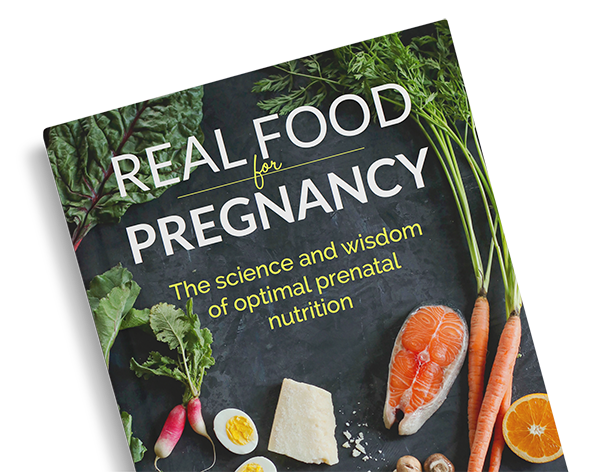
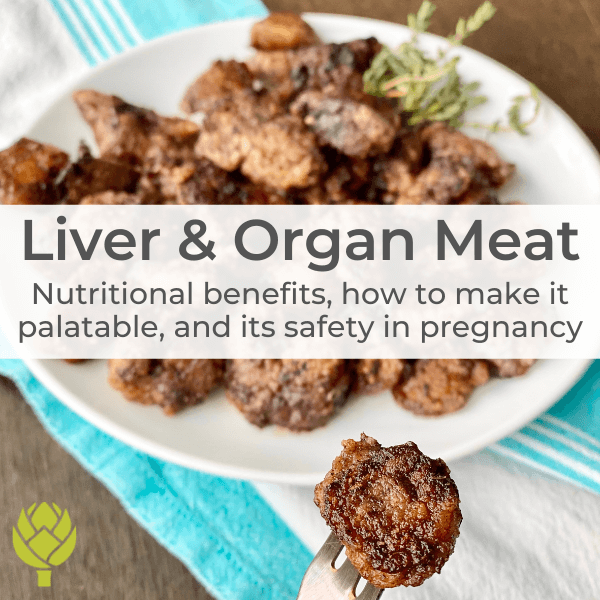
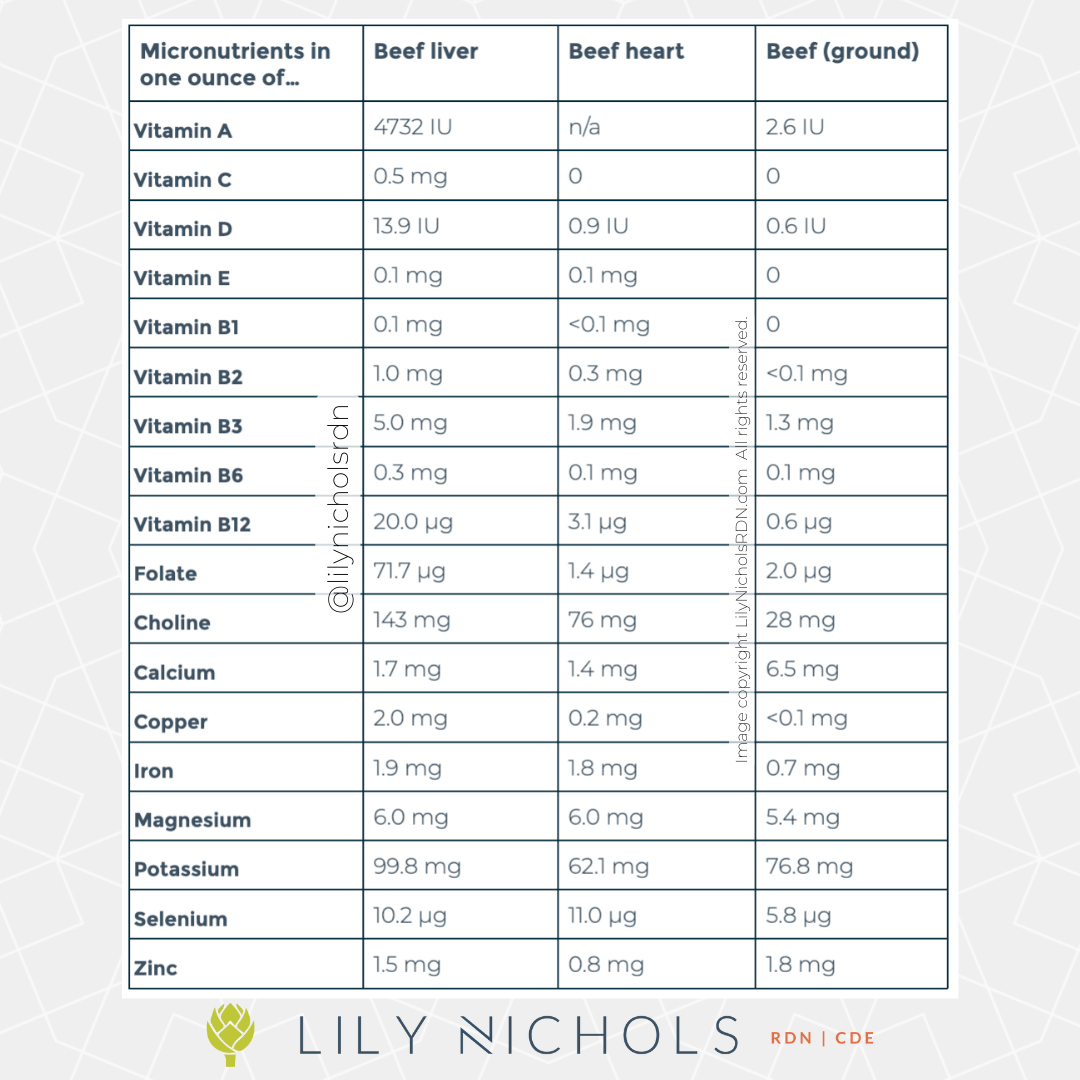
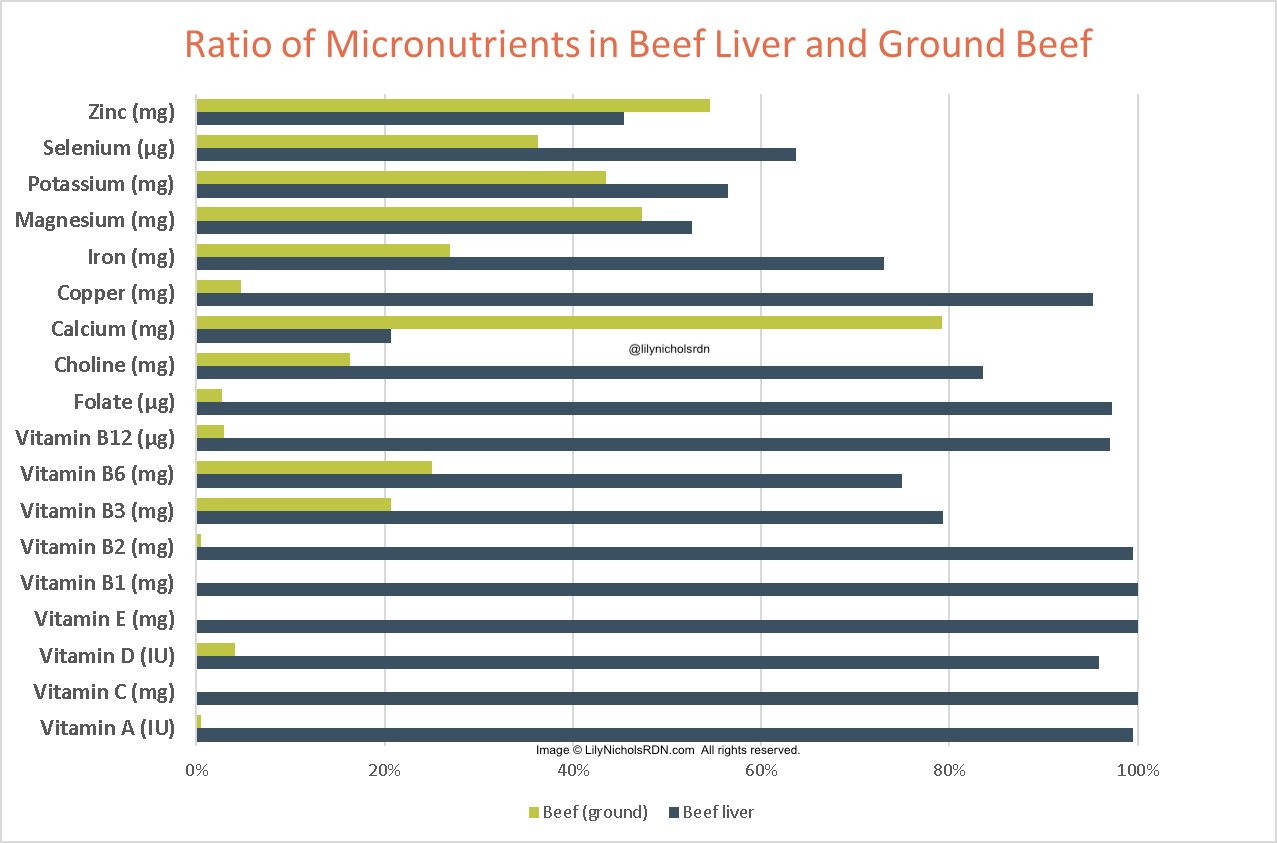
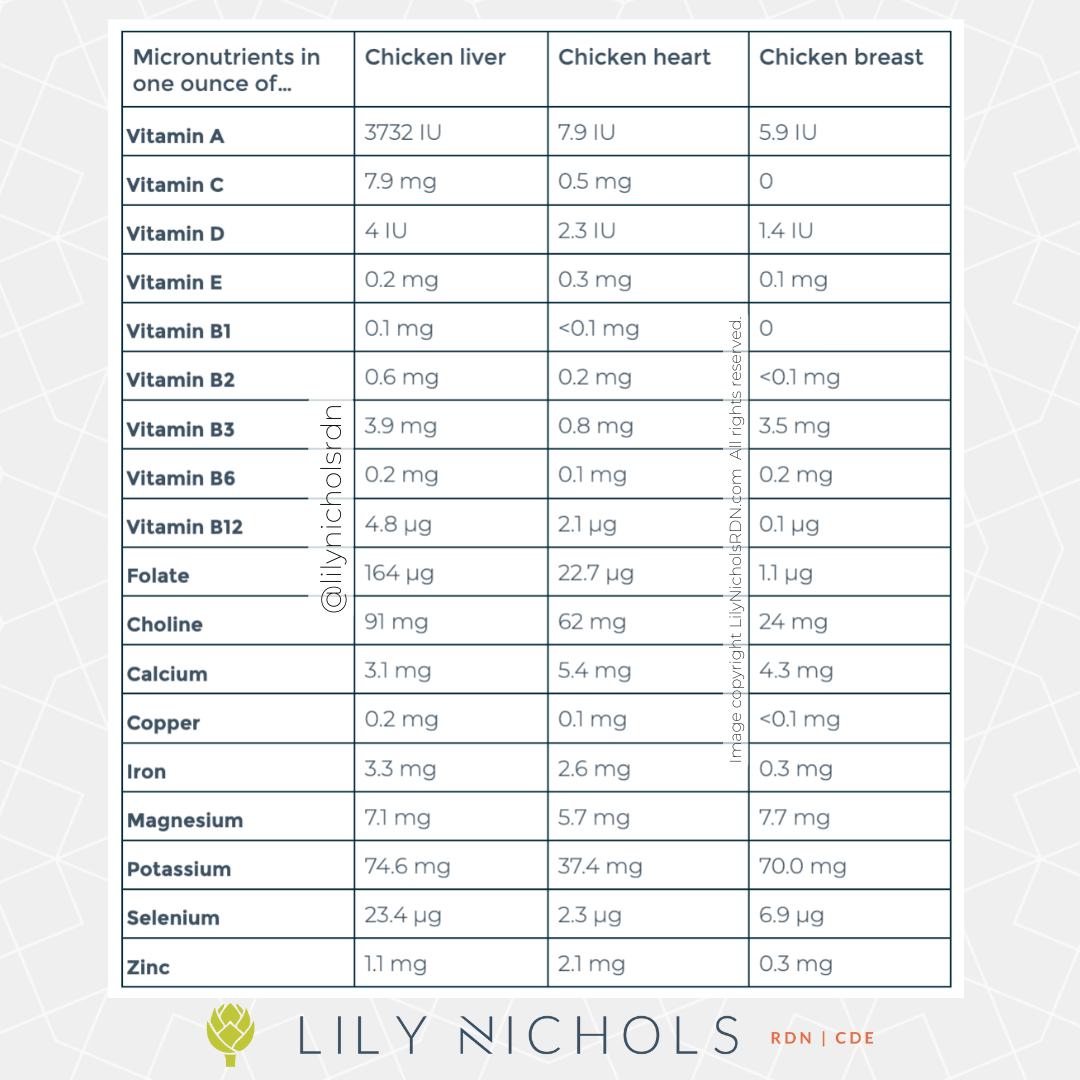

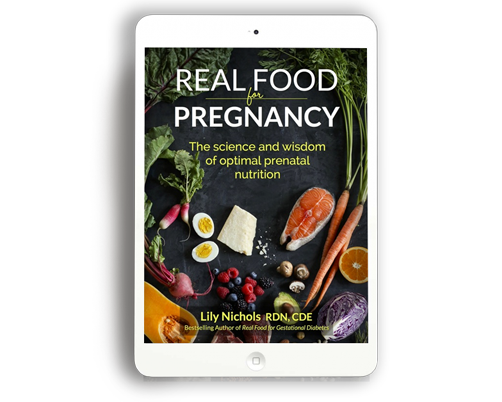
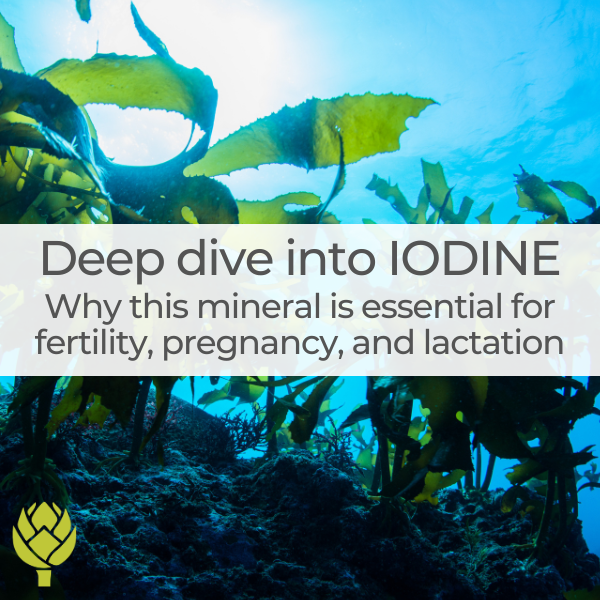

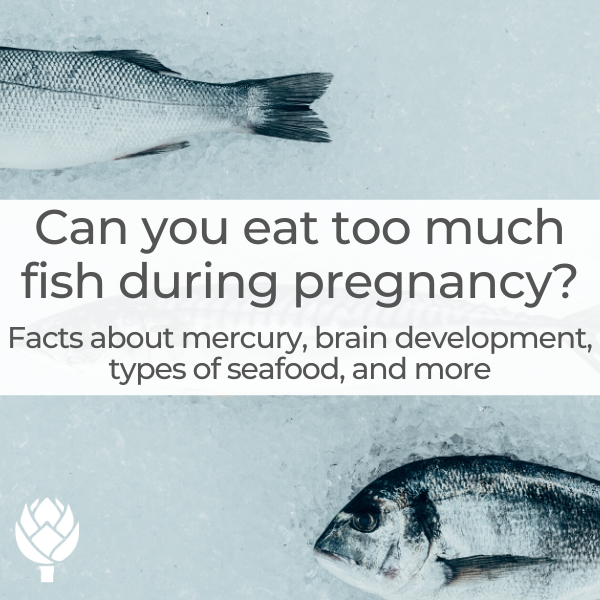
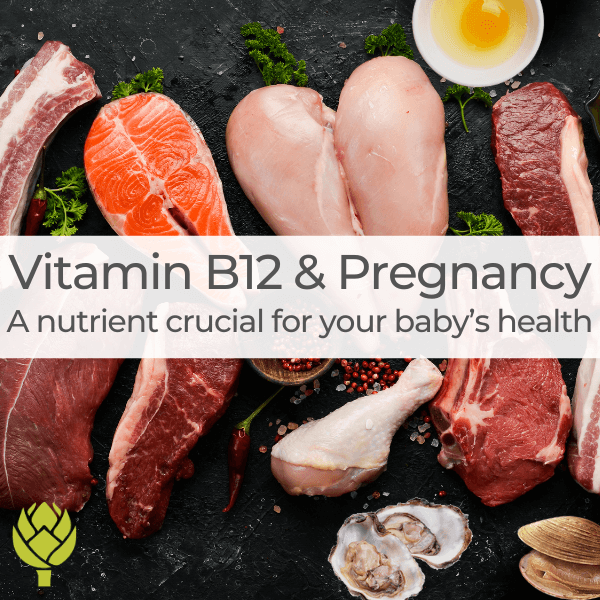

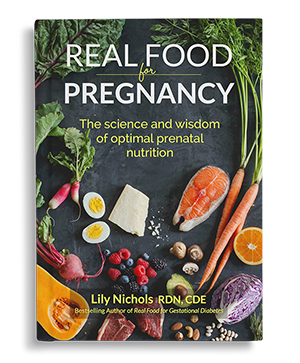
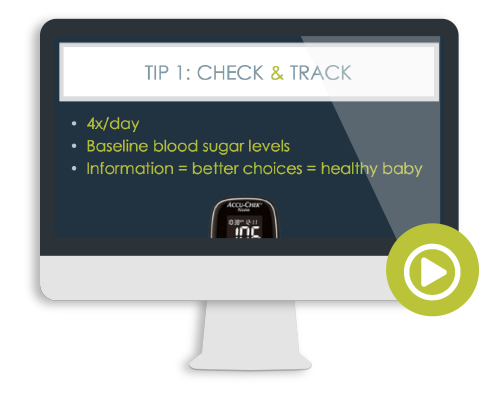
Family recipe for beef tongue: slow cook with a little water and a tablespoon of pickling spice until fully cooked and tender (so, all day). Let cool enough to handle. Use a paring knife to peel the membrane. In a large oven-safe casserole/Dutch oven, combine 1 1/2 to 2 cups rice (brown or white), a quart of beef stock, a bunch of carrots, a pound of frozen peas, and salt to taste. Bury the tongue in the middle. Bake until the rice and carrots are cooked.
Lily- What nutrients are lost when consuming desiccated liver vs. fresh liver? Thanks!
There’s not a significant loss of nutrients if the drying process is performed at low heat.
Is foie grass a good option for store bought pate? Wondering since it’s apparently fattier than regular liver
Do you still have to work about overcooking liver if you’re hiding pate in other things?
Not really because the flavor is diluated with the rest of the meat. Generally, aside from changing the taste, the major concern with overcooking liver is making it tough. But, since pate is pureed, this is a non issue. If you’re making a recipe like the Savory Chicken Liver Bites or Liver and Onions, that’s where you want to be more careful about overcooking.
Sorry, I’m really struggling with the math. I’m taking a prenatal that has 1500mcg vitamin a; 50/50 retinyl palmitate and beta-carotene. Does 3-6 oz of liver still make sense? Thanks!
I have a simulair situation and taking the prenetal from seeking health. would love to know 🙂
In Sweden we eat bloodpudding (black pudding or blood sausage) as part of eating offals and I’m curious what you think of incorporating blood into the diet when pregnant? I have not seen it reccomended here so maybe it’s not something that’s normally eaten. It’s full of iron though 🙂
Yes, a fabulous source of nutrition. If you like it, eat up!
I’m from South Africa and we eat beef tongue at big meals like Christmas. Usually sliced tongue with a sweet mustard sauce. Delicious!
Peri-peri chicken livers are also a South African favorite.
Thank you for this article! Your book and research has gotten me into incorporating liver into my diet and I am so thankful for that! I’m also thankful for your recipes because I had no idea what to do the first time I had a massive raw beef liver on my plate haha! Silly question, but are there any risks to buying frozen liver, thawing, cooking into meatballs and then freezing it again? Thanks!
That’s no problem at all. That’s exactly what I do!
Thank you for your due diligence and well cited articles. I respect the time and effort you give to present very scholarly information to us in layman/average-Joe terms. You truly have a gift of teaching and communicating. Thank you.
Thank you so much, Faith!
Thank you for addressing liverwurst in this post! My Oma (grandma) would serve it to me as a child and I loved it, but my mom always said it was unhealthy and wouldn’t serve it at home. I think she was concerned about the saturated fat. As an adult, I would occasionally eat it but thought of it as a guilty pleasure. Glad to hear it’s a valid option for incorporating liver because it’s the only way I like to eat it!
Thanks for such an excellent article! Just to make sure I’m understanding correctly – the recommendation is that 3-6 oz is a good amount per week, even if taking a prenatal that includes a decent amount of retinol palmitate (FullWell – thanks for your code btw!)? And that’s based on the idea that RDAs are on the very conservative side? As a researcher myself I can very well understand changing practices based on the literature as it takes so long for guidelines to change.
Correct, as long as your average intake is below 10,000 IU in total.
Lily, could you point us to any of those research papers about liver not holding more toxins than muscle meat? My husband refuses to eat it because he feels it stores the toxins instead of filtering them out. (I guess he saw or read something about it years ago) I haven’t been able to find any scientific sources to show him that it doesn’t. I’d love to show him those studies so I can make it for our family regularly!
For hidden liver, does it need to be mixed directly into ground beef recipes only? I’m curious about mixing it into soups etc. for more regular consumption.
Hi, fellow dietitian here! Your blog is fascinating and so fun to read! I am definitely going to try the Forces of Nature blends.
When my mom was pregnant with me, she had cravings for liverwurst and chicken liver and ate both regularly!
Hi,
Just curious what your thoughts are with desiccated liver versus something g like paleo valley organ complex with the mixture of organs. Is one better than another? I’m using the full well prenatal vitamins but can’t seem to stomach the hidden liver I have in my freezer. Thanks!
Hi Lilly,
I am trying to incorporate liver and found pork liver. Is this less desirable than chicken or beef liver? I don’t see it mentioned in the liver chapter in real food for pregnancy or above.
Thank you!
Hi Lily – I was wondering if taking a prenatal with Vitamin A (e.g. FullWell) plus desiccated liver pills (e.g. vital proteins 4x per day) could cause a change in triglycerides or cholesterol?
Thanks!
I wouldn’t expect it to, no.
Thank you so much for this informative article! I recently started to incorporate grass feed beef liver in my diet with the intention to heal and strengthen my tissue after a miscarriage 5 months ago. Also I eat an egg/day. I read about the Bio-availability of nutrients and wonder: if incorporate these nutrient-dense food in my diet, do I really also need the pills? (also thinking about my ancestors who only had the animal sources…) would love to hear your thoughts on that.
Thank you!
You mentioned the beef liver pills, which are essentially frozen raw liver. What’s the amount of time needed to freeze the liver to kill the risk of toxoplasmosis or other pathogens? I’ve heard 2 weeks, is that enough?
Hi, Lily,
I take MegaFood Baby & Me2 Prenatal multi vitamins, which has 286% DV of B-12. Should I still consume liver? If so, what brand of desiccated beef liver pills do you recommend?
Rec’d brand of desiccated liver is linked right here in the article. If you have my book, Real Food for Pregnancy, you may recall the research showing that the RDA for B12 is set at least 3x too low for pregnancy, so even your prenatal is on the low end for B12. You can work with your healthcare provider to determine whether additional supplementation is needed, but generally speaking, there is no concern with overdoing B12 from food sources.
Hi Lily, I loved reading your book, “real food for pregnancy”. I’m taking one of your recommended prenatal vitamins (seeking health optimal prenatal) and it has a total of 1500 mcg of vitamin A, beta carotene and retinyl palmitate combined. I also have the vital proteins beef liver capsules (serving size of 4 capsules a day is 1500 mcg) but have been afraid to take them. How do I determine how much of the vitamin A makes up the retinal portion of the seeking health vitamin so I know if/how much of the liver capsules I can take and how frequently I should take them? I’d like to incorporate the liver into my diet during pregnancy but I’m scared of taking too much. I used to be a vegetarian (but have been trying to eat more meat during pregnancy especially) and I don’t think I can handle consuming liver any other way except through pill form right now but I still really would like to incorporate the health benefits of liver into my diet at this time so it would need to be the capsules. I’m just not sure how much I should take bc I can’t determine how much retinal is in my prenatal. What do you recommend? Your advice would be so appreciated. Thanks so much Lily!
Hi Lily! Love your book real food for pregnancy. I follow your meal plans and feel great! Quick question. I take the ancestral supplement beef liver (6 pills daily) and full well prental daily in pregnancy. Is the amount of vitamin A too much? Based on my calculations I am at about 9,000 IU a day with those pills so sounds like I am just under your recommendation.
Hi Lily,
Thank you so much for the article! I really admire your work.. I’m pregnant and am taking the seeking health optimal prenatal that you recommended. Can I still take my codliver oil or eat liver or would that be to much vitamin a? Thank you Naomi
Hello Ma’am!!
Please can I get the PDF of The “Real food for gestational diabetes” book??
Here in Pakistan, this book is not available.
Will be very very thankful ♥️
Do you have to worry about listeria with eating cold braunschweiger?
Thank you for all of the information you share here and in your book about consuming liver. I have add it in pâté form to dishes with ground beef or I buy brands that sell a frozen ground beef mixed with liver and heart.
I recently was given a lot of venison meat from a family member who hunts and asked them to save me the deer liver as well. I don’t know why it would be any different, but is there any concern with consuming liver from deer? And do you know how it compares to beef as far as taste or nutrient density?
Thanks again! I recommend you as a resource to everyone I know who is pregnant.
I am taking a desiccated liver supplement and I wonder – what if the best time to take it each day? With or without food? The full serving size at once or split up? Thanks!
With or without food shouldn’t make much difference. If you have a sensitive stomach, try with food. No need to split it up into multiple doses. A typical desiccated liver provides the equivalent of less than an ounce of fresh liver per serving.
I have seen some articles mention to eat only organ/liver meat after your first trimester, do you recommend to eat it from the start of your pregnancy? And then secondly is lamb liver/lamb organ meats just as good as from beef/chicken, that is more available to me where I am.
If you’re eating the portion sizes outlined in this article, there is no concern over excess vitamin A at any stage in pregnancy. Yes, lamb organ meats are great.